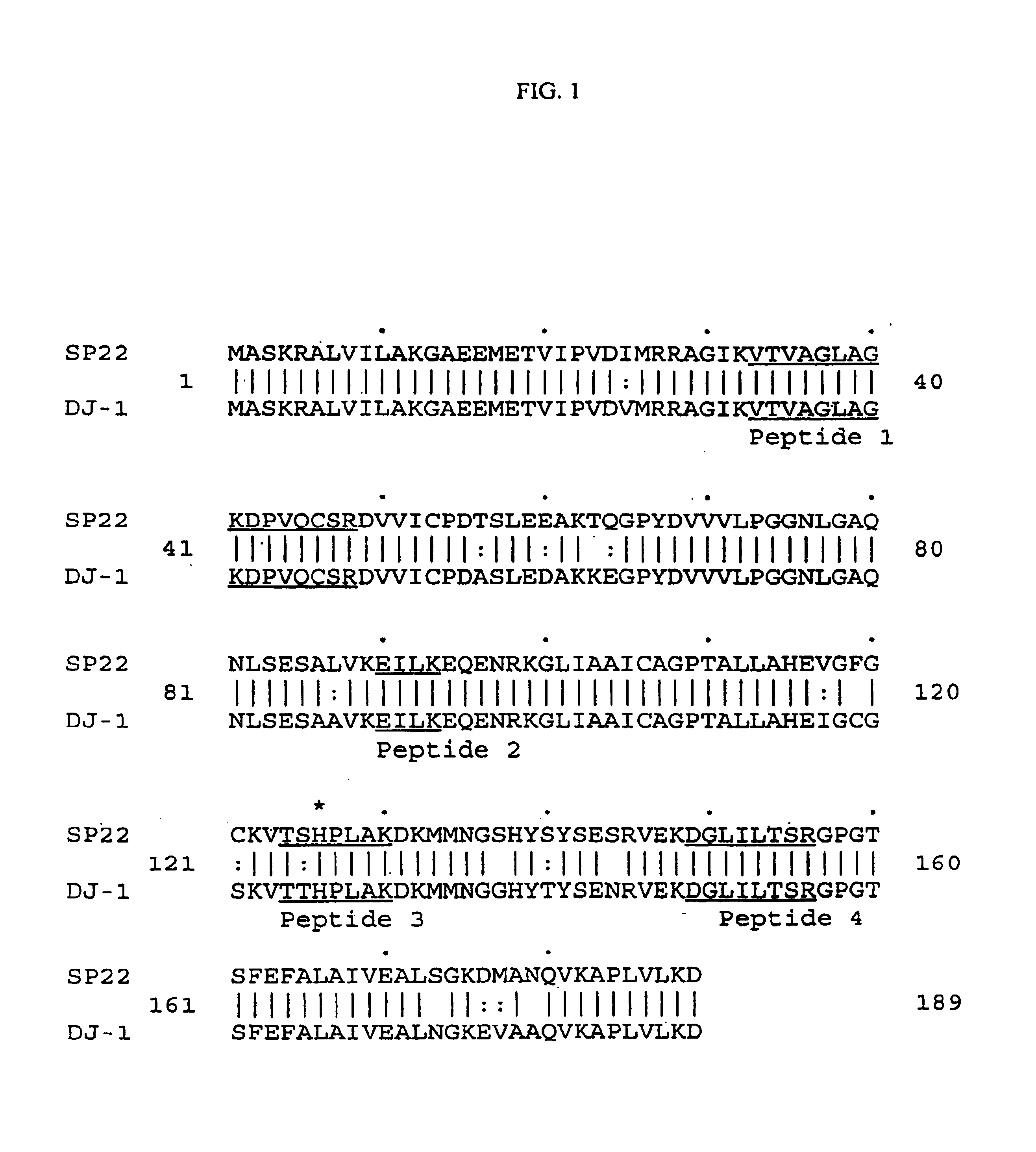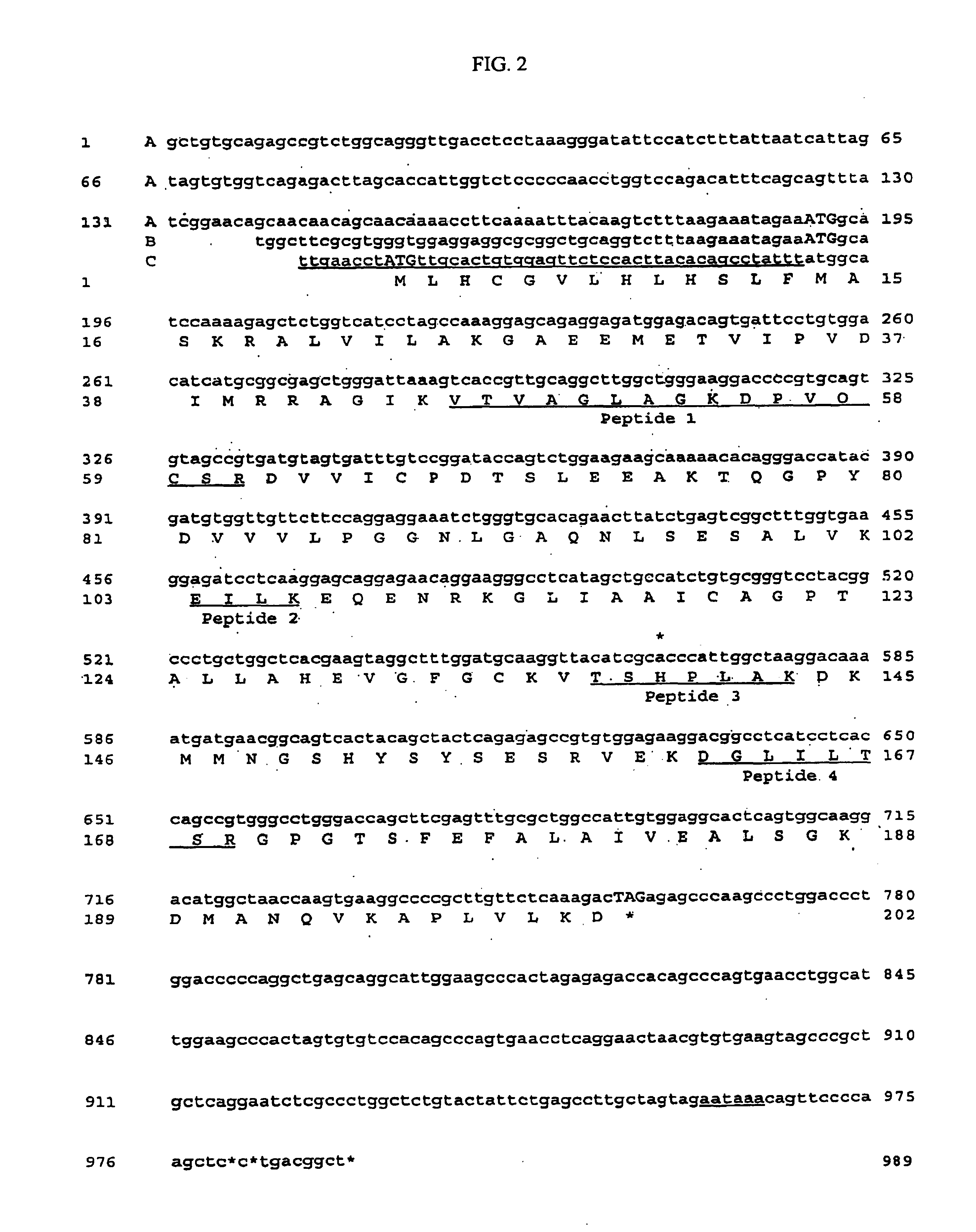Method for evaluating and affecting male fertility
a technology for applied in the field of evaluating and affecting male fertility, can solve the problems of affecting affecting the fertility of fertile men, and high incidence of sperm in the ejaculate of fertile men morphologically abnormal, etc., to achieve the effect of improving fertility and improving the success of these techniques
- Summary
- Abstract
- Description
- Claims
- Application Information
AI Technical Summary
Benefits of technology
Problems solved by technology
Method used
Image
Examples
Embodiment Construction
lass="d_n">[0048]SP22 is characterized by the nucleotide and amino acid sequences of FIG. 15.
[0049]As noted previously, a number of proteins associated with the sperm membrane, including PH-20, ZP3, SP-17, and proteins D and E, as well as the Wei 17 kD protein, do not localize. In contrast, antibody to SP22 peptides localizes over a very discrete region of the sperm head, i.e., the ventral anterior surface of the equatorial segment. More importantly, however, the 17 kD protein described by Wei et al., (1994) was never identified in the profile of proteins in the original detergent extract. Thus, it is impossible to determine the relationship of this protein relative to others reported in the literature. It seems that this may be similar to the more recently-described SP-17 (Lea et al., 1996), but this is impossible to determine, as amino acid sequence data were not provided by Wei et al. (1994).
[0050]It is clearly evident that SP22 is unique compared to any putative fertility protei...
PUM
 Login to View More
Login to View More Abstract
Description
Claims
Application Information
 Login to View More
Login to View More - R&D
- Intellectual Property
- Life Sciences
- Materials
- Tech Scout
- Unparalleled Data Quality
- Higher Quality Content
- 60% Fewer Hallucinations
Browse by: Latest US Patents, China's latest patents, Technical Efficacy Thesaurus, Application Domain, Technology Topic, Popular Technical Reports.
© 2025 PatSnap. All rights reserved.Legal|Privacy policy|Modern Slavery Act Transparency Statement|Sitemap|About US| Contact US: help@patsnap.com



